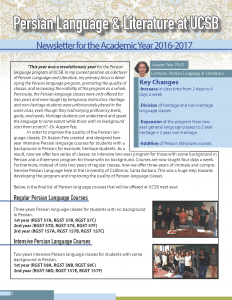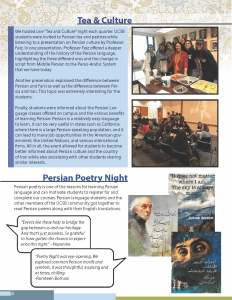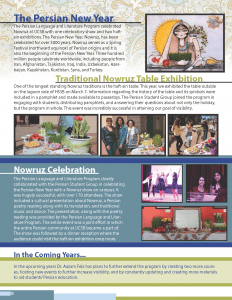Add to Calendar
When:
November 13, 2024 @ 4:45 pm – 6:30 pm
America/Los Angeles Timezone
2024-11-13T16:45:00-08:00
2024-11-13T18:30:00-08:00
Where:
UCSB SSMS 2135
Cost:
Free
Contact:
Fabio Rambelli
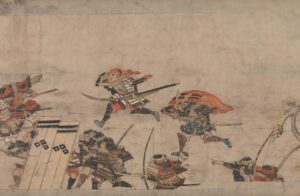
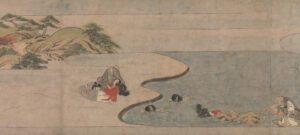
Warriors and Whispers: The Rationale for Love and War in Medieval Japanese Buddhism
“A Long Tale for an Autumn Night” (Aki no yo no naga monogatari) is an illustrated narrative scroll (emaki) dated to the 14th or 15th century, presently held at the Metropolitan Museum of Art in NYC. It is the earliest pictorial work belonging to the so-called genre of chigo monogatari (“acolyte tales”). This genre consists of stories that revolve around the infatuation of an older monk with a young monastic acolyte (chigo). In this tale, the male-male love affair leads to intense military warfare between competing factions of the Tendai tradition, Enryakuji and Miidera, the two lineages from which the lovers respectively hailed. The plot culminates in the suicide of the young boy, Umewaka, and the realization that the boy was, in fact, a manifestation of the bodhisattva of compassion, Kannon, of the temple Ishiyama-dera. This tragic ending also elicits the monk’s own renunciation of carnal desire and prompts him to accept the life of a Buddhist recluse. The scroll is known for its iji dōzu (“synoptic narrative) technique, wherein multiple parts of a story are illustrated within a single compositional frame. The tale has been considered one of the greatest masterpieces of medieval literature, and has been a subject for debate in multiple disciplines including art history, literature, religious studies, and others.
The presentation explores the manifold themes and aspects of this painted work, ranging from doctrinal matters, the relationship between visual art and narrative text, and the religious rationalization of war and tragedy.
The presentation explores the manifold themes and aspects of this painted work, ranging from doctrinal matters, the relationship between visual art and narrative text, and the religious rationalization of war and tragedy.
*******
Dr. Or Porath is an Assistant Professor at Tel Aviv University. He serves as the Vice-President of the Society for the Study of Japanese Religions and as an associate editor for the journal Japanese Religions. After earning his PhD from the University of California, Santa Barbara in 2019, he taught at the University of Chicago (2019–2021) and at Leiden University in the Netherlands (2022–2023), before joining Tel Aviv University.
Porath specializes in Buddhist Studies and East Asian religions, with a focus on the history of Buddhist monasticism. He is a scholar of Japanese religions, particularly focusing on the influential Tendai school of Buddhism and its doctrines and practices, as well as the intersection between the medieval Buddhist worldview and sexuality. Porath is the co-editor of <Rituals of Initiation and Consecration in Premodern Japan: Power and Legitimacy in Kingship, Religion, and the Arts> (with Fabio Rambelli, 2022). His articles and translations have been published in several edited volumes and peer-reviewed journals, including the Journal of Religion in Japan, Japanese Journal of Religious Studies, Religions, and the Journal of the History of Childhood and Youth.
Porath’s current book project, tentatively titled <The Dharma of Sex: Initiation, Deification, and Passion in Medieval Japanese Buddhism>, explores the “consecration of acolytes” (chigo kanjō) and how male-male sexual acts were sanctified and legitimized within Tendai doctrinal thought and monastic society. The book demonstrates that this sexual initiation ritual not only redefined the relationship between monks and their acolytes but also provided a framework for institutionalizing and rationalizing male-male sexuality, aligning it with the broader constellation of medieval doctrine.
Porath’s current book project, tentatively titled <The Dharma of Sex: Initiation, Deification, and Passion in Medieval Japanese Buddhism>, explores the “consecration of acolytes” (chigo kanjō) and how male-male sexual acts were sanctified and legitimized within Tendai doctrinal thought and monastic society. The book demonstrates that this sexual initiation ritual not only redefined the relationship between monks and their acolytes but also provided a framework for institutionalizing and rationalizing male-male sexuality, aligning it with the broader constellation of medieval doctrine.












